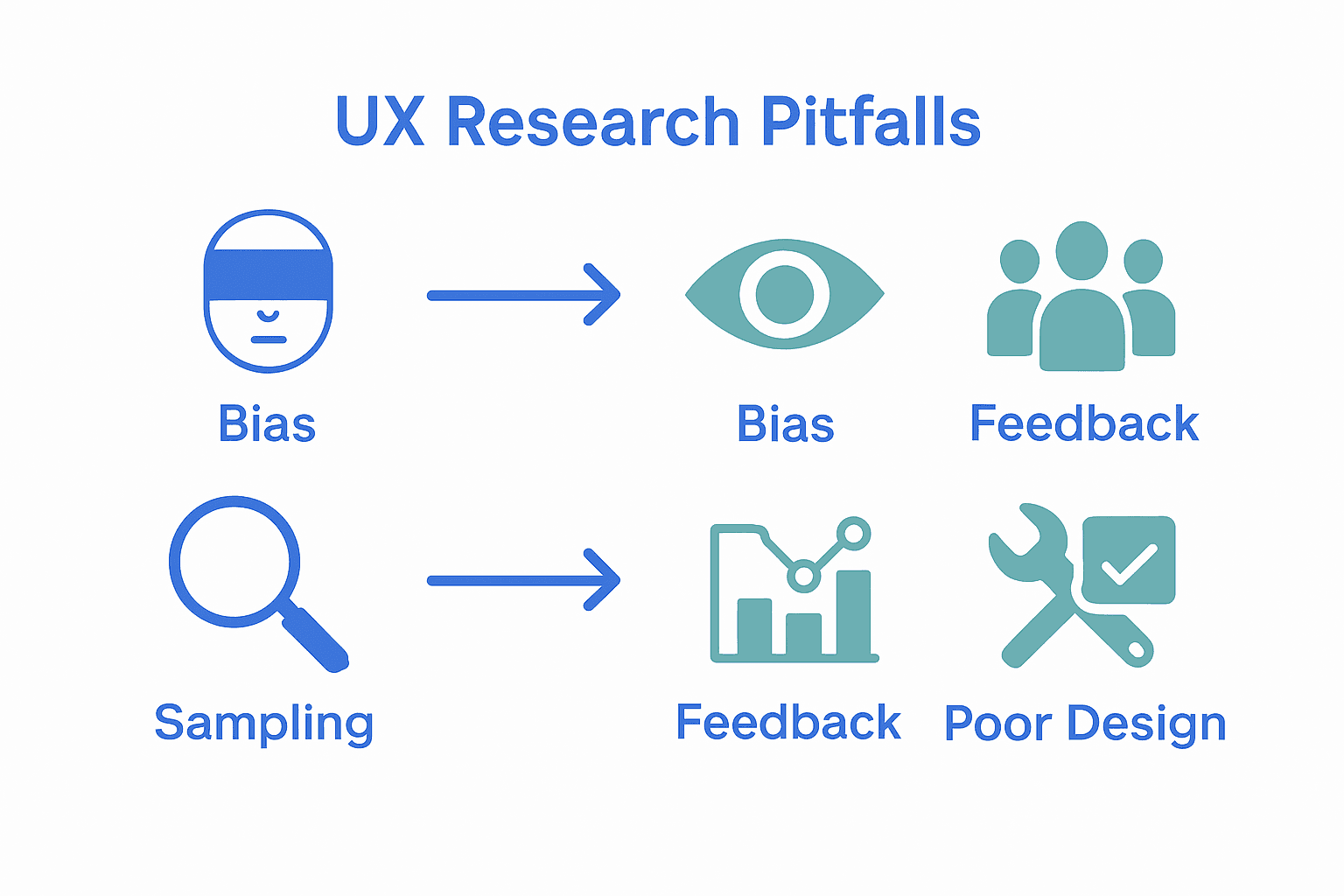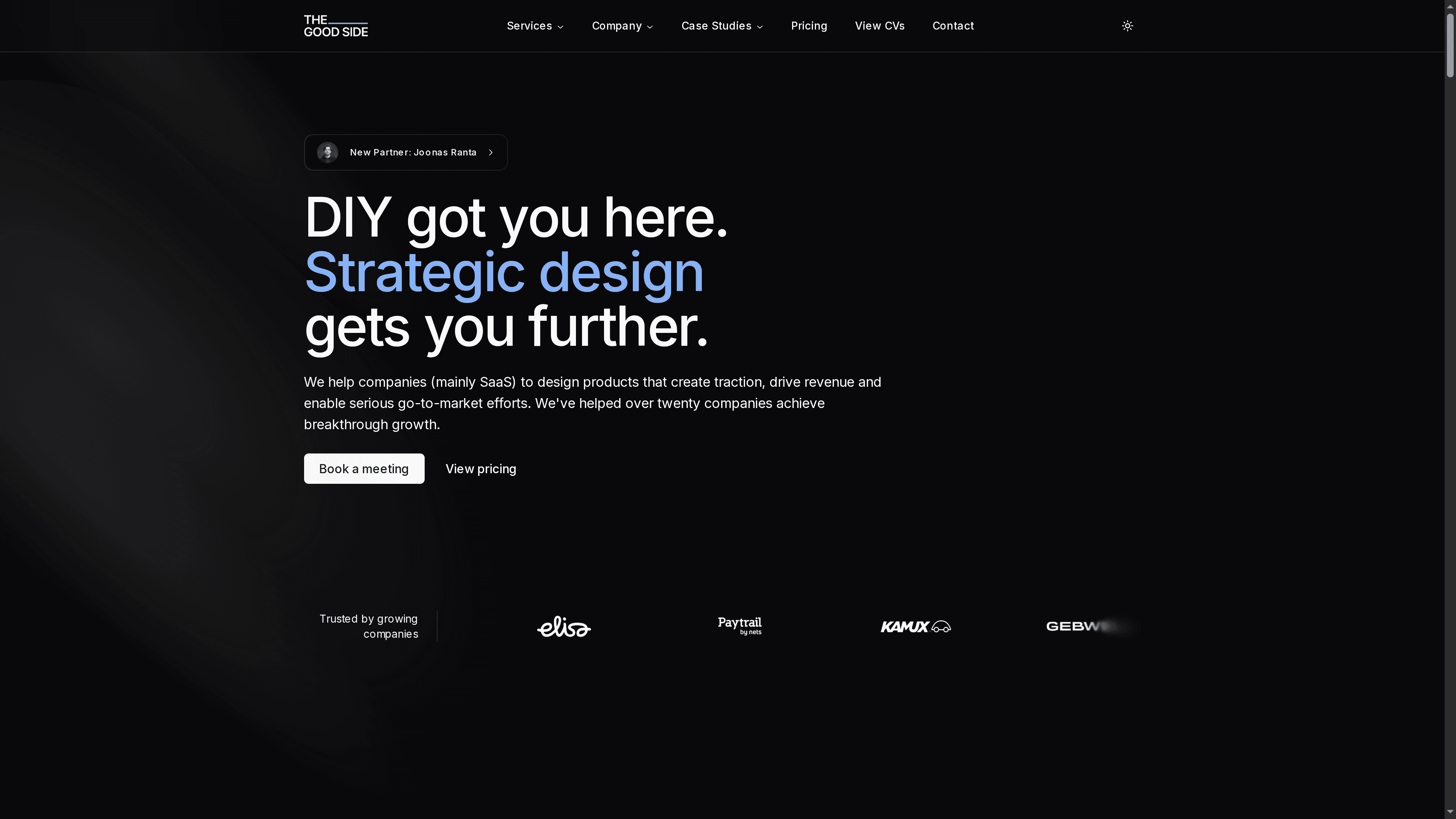UX Research Explained: Driving SaaS Product Success
Why invest in UX research? This comprehensive guide covers its definition, types, business benefits, ROI, implementation strategies, and SaaS-specific outcomes.

Every american SaaS company faces a common challenge—bridging the gap between what users want and what they actually experience. With over 80 percent of digital products failing to meet user expectations, the stakes for delivering smooth, frustration-free interfaces have never been higher. Understanding what drives real user behavior is not just a tech trend but a crucial factor for lasting business success. This guide offers practical ways to turn research insights into powerful design decisions that boost both customer satisfaction and company growth.
Table of Contents
- What Is UX Research And Why It Matters
- Key Types Of UX Research Methods
- Business Impact Of Investing In UX Research
- ROI And Efficiency Gains For SaaS Teams
- Common Pitfalls And How To Avoid Them
Key Takeaways
| Point | Details |
|---|---|
| Importance of UX Research | UX research turns product development into a strategic process by understanding user behaviors and needs, leading to actionable insights. |
| Types of UX Research Methods | There are six key categories of UX research, including quantitative, qualitative, and evaluative, each providing unique insights into user interactions. |
| Business Impact | Investing in UX research can lead to reduced development costs, increased user retention, and higher conversion rates by aligning products with user needs. |
| Common Pitfalls | Avoid confirmation bias, inadequate user sampling, and misinterpretation of feedback to ensure effective and meaningful UX research outcomes. |
What Is UX Research And Why It Matters
UX research transforms product development from guesswork into strategic insight. According to mentoring.org, user experience research focuses on understanding user behaviors, needs, and motivations through systematic observational techniques and feedback methods.
At its core, UX research aims to uncover critical barriers and frustrations users encounter when interacting with digital products. Wikipedia explains that this process helps businesses improve their offerings by deeply understanding who their users are and how to help them accomplish their tasks more effectively. The goal isn’t just collecting data - it’s about generating actionable insights that drive meaningful product improvements.
Effective UX research encompasses multiple strategic approaches:
- Observational Studies: Watching users interact with products in real environments
- Feedback Collection: Gathering direct input through surveys, interviews, and usability tests
- User Journey Mapping: Understanding complete user experiences and potential friction points
- Behavioral Analysis: Identifying patterns and trends in user interactions
By prioritizing user perspectives, SaaS companies can create products that not only meet technical requirements but genuinely solve user problems. Research transforms abstract user needs into concrete design decisions, ensuring that every product feature serves a meaningful purpose. With User Experience is Research, Not Guesswork, you’ll discover how systematic research becomes the foundation of exceptional digital experiences.
Key Types Of UX Research Methods
UX research encompasses a diverse range of methodological approaches designed to uncover deep insights about user experiences. According to DesignRush, there are six primary categories of UX research that help teams understand complex user interactions and preferences.
These research types can be broadly classified into complementary approaches:
- Quantitative Research
- Focuses on numerical data and statistical analysis
- Measures specific metrics and user behavior patterns
- Uses tools like web analytics, surveys with scaled responses
- Qualitative Research
- Explores user motivations, feelings, and subjective experiences
- Captures rich, descriptive insights through interviews and observations
- Helps understand the “why” behind user actions
- Evaluative Research
- Assesses existing products or design solutions
- Tests usability, effectiveness, and user satisfaction
- Includes usability testing and user feedback sessions
- Generative Research
- Identifies new opportunities and potential product directions
- Conducted before design process to understand user needs
- Involves ethnographic studies and contextual inquiry
- Attitudinal Research
- Captures user opinions, perceptions, and emotional responses
- Uses methods like sentiment analysis and feedback surveys
- Reveals users’ stated preferences and attitudes
- Behavioral Research
- Tracks actual user interactions and performance
- Observes how users navigate and interact with products
- Relies on tools like heatmaps, session recordings, and task completion metrics
By strategically combining these research methods, SaaS teams can develop a comprehensive understanding of their user base.
For deeper insights into leveraging these techniques, check out our 7 Essential Types of UX Audits Every SaaS Team Should Know, which provides advanced strategies for conducting thorough user experience investigations.
Business Impact Of Investing In UX Research
UX research represents a strategic investment that transforms how businesses understand and serve their users. arXiv highlights that integrating generative UX research into product development can significantly increase user interest and trust, creating a direct pathway to more engaged and satisfied customer bases.
The financial implications of robust UX research are substantial. Companies that prioritize understanding user needs can expect measurable returns through:
- Reduced development costs by identifying user requirements early
- Lower customer support expenses
- Increased user retention and loyalty
- Higher conversion rates
- More efficient product iterations
Moreover, emerging research frameworks are expanding the potential of UX methodologies. arXiv introduces the ‘UX 3.0’ paradigm, which encompasses advanced approaches like AI-enabled experiences and human-AI collaboration. These innovative methods provide deeper insights into user interactions, enabling businesses to develop more intelligent and responsive products.
The competitive landscape demands more than surface-level understanding. By Why Invest in UX: Complete Guide for SaaS Success, SaaS companies can transform user research from a cost center into a strategic advantage. Investing in comprehensive UX research isn’t just about improving design—it’s about creating products that resonate deeply with user needs, ultimately driving sustainable business growth.
ROI And Efficiency Gains For SaaS Teams
UX research has evolved into a strategic powerhouse for driving organizational efficiency and measurable business outcomes. arXiv introduces innovative systems like UX Remix, which streamline research processes by leveraging large language models to develop more precise measurement constructs and research methodologies.
Efficiency gains for SaaS teams through strategic UX research manifest in multiple critical dimensions:
- Accelerated Development Cycles: Reducing time-to-market by identifying user requirements earlier
- Cost Optimization: Minimizing unnecessary feature development
- Enhanced Product-Market Fit: Creating solutions directly aligned with user needs
- Reduced Support Overhead: Developing more intuitive, user-friendly interfaces
- Improved Conversion Rates: Designing experiences that naturally guide user behavior
Research methodologies continue to advance rapidly. arXiv highlights that quantitative UX evaluation approaches are becoming increasingly sophisticated, particularly in training and educational contexts. These emerging techniques provide SaaS teams with more nuanced, data-driven insights into user experience performance.

By embracing comprehensive UX research strategies, teams can transform potential inefficiencies into competitive advantages. For a deeper exploration of these principles, check out our Why Improve Product UX: Complete Guide for SaaS, which offers detailed strategies for maximizing research investments and driving sustainable product growth.
Common Pitfalls And How To Avoid Them
UX research can quickly derail without careful planning and execution. Wikipedia emphasizes the critical importance of understanding research context, highlighting that effective user research goes far beyond simple observation and requires a nuanced, strategic approach.
Most common UX research pitfalls include:
- Confirmation Bias
- Seeking only data that confirms preexisting assumptions
- Ignoring contradictory user feedback
- Filtering out uncomfortable or challenging insights
- Inadequate User Sampling
- Recruiting users from too narrow a demographic
- Not representing the full diversity of potential user groups
- Relying on convenience rather than representative sampling
- Misinterpreting User Feedback
- Taking user suggestions literally instead of understanding underlying needs
- Failing to distinguish between what users say and what they actually do
- Overlooking emotional and contextual nuances in user responses
- Poor Research Design
- Using inappropriate research methods for specific objectives
- Lack of clear research questions and hypotheses
- Insufficient preparation and structure in research protocols
Wikipedia underscores that successful UX research demands carefully selecting dimensions, constructs, and methods targeted to specific research interests. This precision prevents common mistakes and ensures meaningful, actionable insights.
To navigate these challenges effectively, SaaS teams should adopt a rigorous, systematic approach.

Our 7 Key Advantages of UX Research for SaaS Companies provides comprehensive strategies for conducting robust, insightful user research that drives meaningful product improvements.
Unlock Your SaaS Product’s True Potential with Strategic UX Research
Facing challenges like unprofessional interfaces or disconnected user journeys can stall your product’s growth. The article highlights how UX research is more than just guesswork—it is a critical tool that uncovers real user needs and drives actionable insights. If your goal is to move beyond assumptions and create a seamless experience that boosts conversions and retention, targeted UX research is essential.
Transform frustration into opportunity with The Good Side Oy. Our senior SaaS-specialized designers partner with your team to deliver precise user research, impactful UI/UX design, and strategic positioning. We turn complicated user feedback and behaviors into clear design decisions that accelerate activation and revenue growth. With flexible engagement models and rapid deployment, you can start improving your product experience without the delays traditional hiring causes.

Ready to make informed decisions that propel your SaaS product forward
Explore how The Good Side helps SaaS teams harness the power of UX research and design. Start today with a free design audit for a clear roadmap to success. Learn more about our user research services and discover why so many SaaS companies trust us to shape their future.
Frequently Asked Questions
What is UX research?
UX research is the systematic study of user behaviors, needs, and motivations that informs product development and improves user experience. It involves observational techniques and feedback methods to gain insights into user interactions with digital products.
Why is UX research important for SaaS products?
UX research is crucial for SaaS products because it transforms guesswork into strategic insights. By deeply understanding users, companies can create products that solve real problems, improve usability, and ultimately drive user satisfaction and business growth.
What are the main types of UX research methods?
The main types of UX research methods include quantitative research, qualitative research, evaluative research, generative research, attitudinal research, and behavioral research. These methods can be strategically combined to gain comprehensive insights into user experiences.
How does investing in UX research impact ROI for businesses?
Investing in UX research can lead to significant ROI by reducing development costs, increasing user retention, lowering customer support expenses, and improving conversion rates. Understanding user needs earlier allows companies to create products that align closely with market demands.